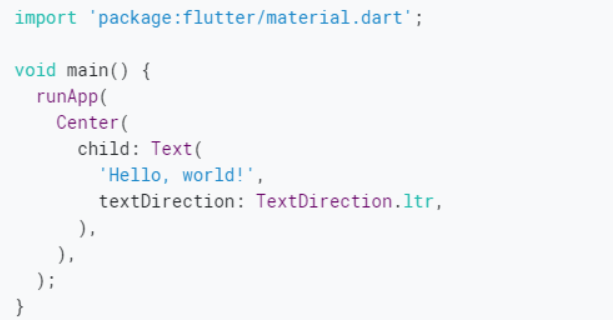Flutter is an open-source, multi-platform, and free framework created by Google for creating mobile applications. It is written in “DART”. It’s very easy to learn and now it’s getting more and more popular. By going through this post, you will be able to learn some basic stuff, and you will also be able to create a simple application using this technology.
Getting started – Installing:
The first step you need to do, if you are willing to create Flutter applications, is, of course, installing it. You can install it on your platform using this link https://flutter.io/get-started/install/
To install it you only need to first install and configure Android SDK after that you have to simply follow these simple instructions:
- Download Flutter SDK from the official website and extract it using an extraction tool.
- Add the path to previously extracted SDK to your PATH variable
- Use the flutter doctor tool to run on a check if everything is configured correctly in your device.
To create apps using Flutter, you can either use IntelliJ IDEA or Android Studio. The only thing required is an IDE with Flutter plugin installed in it.
Creating your first application:
This example is a simple notepad application that yields “Hello World” as output. This app permits you to create notes and keep them stored in a local database.
The Flutter app simply calls the runapp() function using a widget:

The code snippet gives a basic idea of creating a “Hello World” application using Flutter. The runApp() function takes the given Widget and makes it the basis of the widget tree. In the above example, the widget tree consists of two widgets, the Center widget, and the “Text widget” which is its child widget. The framework forces the root widget to cover the screen, which bears the text “Hello, world” ends up centered on the screen.
Why should we care about Flutter?
Google and others use Flutter in production, works with Firebase and other mobile app SDKs, and is open-source.
But there are far more reasons for this. Here’s some of them:-.
- We can do more with less code, using all the features of Dart language.
- We can use Flutter for making a quick prototype of our app.
- Flutter will make mobile app development very easy, but it’s definitely not magic. It does seem like you’ll be able to build relatively simple apps (For e.g. a social networking app or an e-commerce app) that are more beautiful and performing than React Native.
If you have skills in PHP programming and you want to enhance your career in this field, a PHP certification from StudySection can help you reach your desired goals. Both beginner level and expert level PHP certification exams are offered by StudySection along with other programming certification exams.




